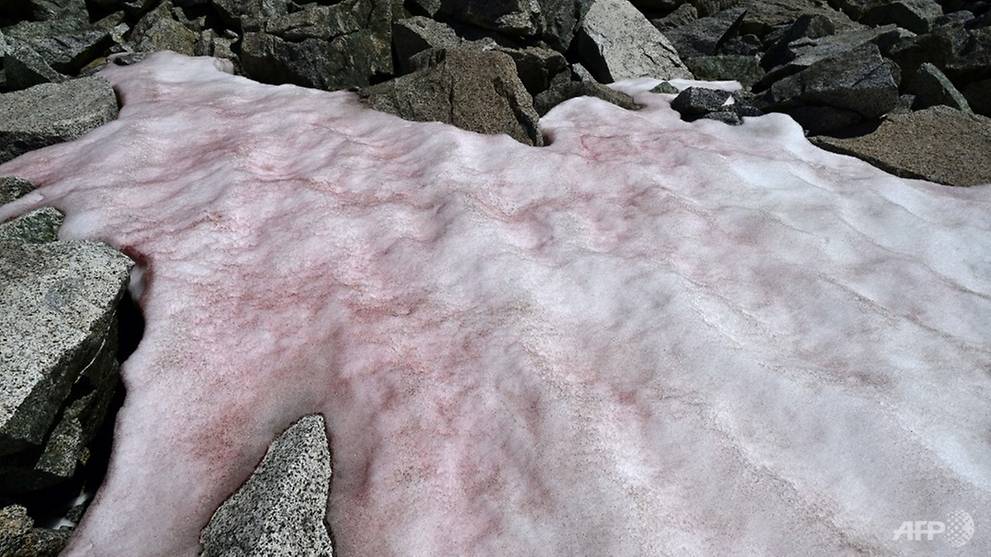
PASSO GAVIA: Scientists in Italy are investigating the mysterious appearance of pink glacial ice in the Alps, caused by algae that accelerate the effects of climate change.
There is debate about the origin of the algae, but Biagio Di Mauro, from the National Research Council of Italy, said the pink snow seen on parts of the Presena glacier is likely caused by the same plant found in Greenland.
“The algae is not dangerous, it is a natural phenomenon that occurs during the spring and summer periods in the middle latitudes, but also in the poles,” said Di Mauro, who had previously studied the algae on the Morteratsch glacier in Switzerland.
Biagio di Maio, researcher at the CNR (National Research Council) takes samples of pink snow on July 4, 2020 on top of the Presena glacier near Pellizzano. (Photo: AFP / Miguel Medina)
The plant, known as Ancylonema nordenskioeldii, is present in the so-called Greenland Dark Zone, where the ice is also melting.
Normally, ice reflects more than 80 percent of solar radiation into the atmosphere, but as algae appear, they darken the ice so that it absorbs heat and melts more quickly.
READ: Climate change is turning Antarctic snow green
More algae appear as the ice melts more quickly, giving them vital water and air and adding red shades to the white ice at Passo Gavia, altitude 2,618 meters (8,590 feet).
Biagio di Maio, researcher at the CNR (National Research Council) shows pink snow on July 4, 2020 on top of the Presena glacier near Pellizzano, (Photo: AFP / Miguel Medina)
“Anything that obscures the snow makes it melt because it speeds up radiation absorption,” Di Mauro said.
“We are trying to quantify the effect of other phenomena besides the human one on the overheating of the Earth,” Di Mauro said, noting that the presence of hikers and ski lifts could also have an impact on the algae.
Tourists on the glacier lament the impact of climate change.
A photograph taken on July 4, 2020 at the top of the Presena glacier (3,000 m), Val di Sole, near Pellizzano, shows pink snow allegedly due to the presence of algal colonies of the species Ancylonela nordenskioeldii from Greenland. (Photo: AFP / Miguel Medina)
“Global overheating is a problem, the last thing we needed was algae,” said tourist Marta Durante.
“Unfortunately, we are causing irreversible damage. I think we are already at the point of no return.”
Elisa Pongini from Florence said she felt the Earth was “giving us back everything we have done to it.”
“2020 is a special year: terrible things have happened,” he said. “In my opinion, atmospheric phenomena are getting worse. Climate change is becoming more evident.”
.